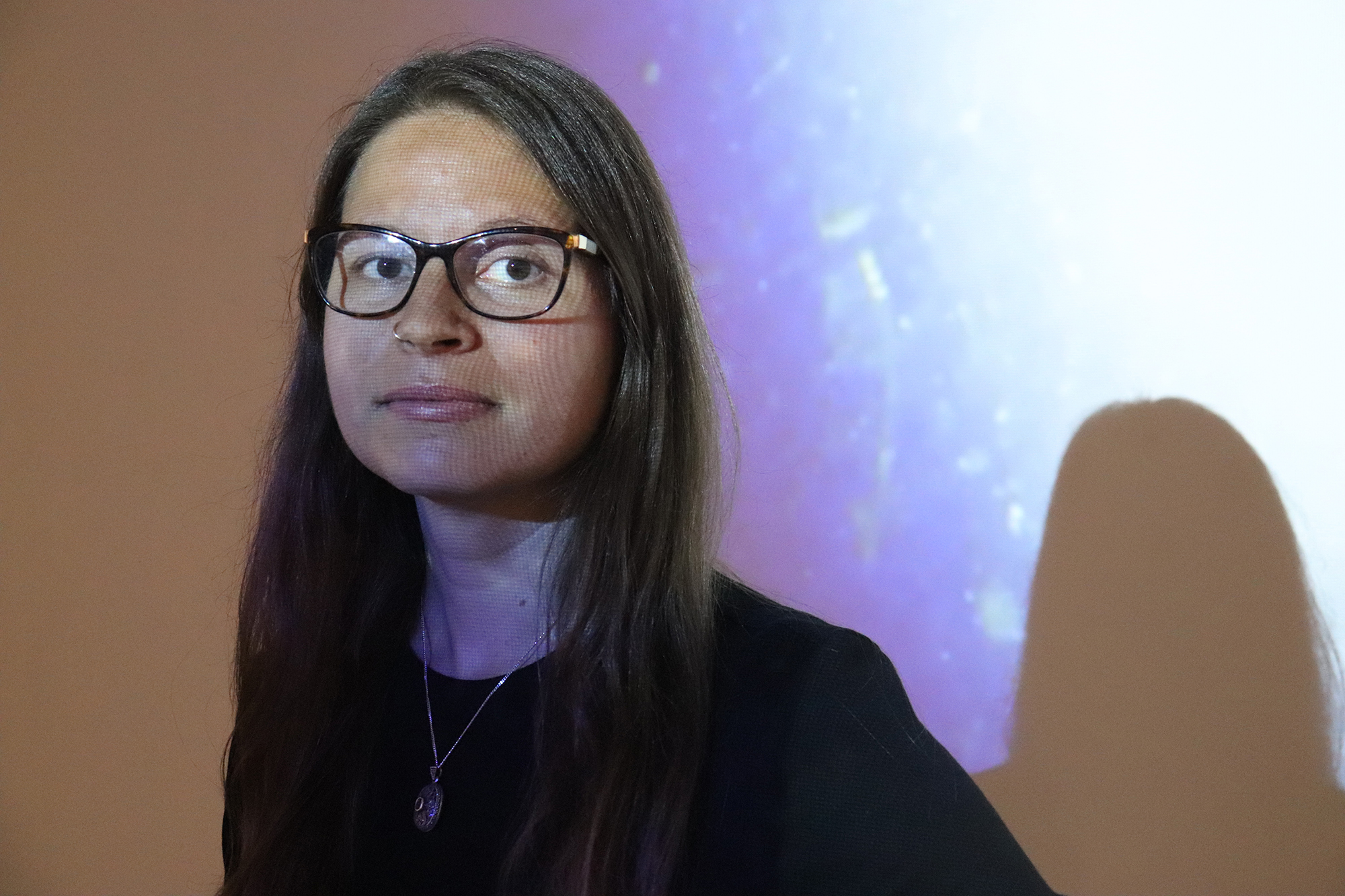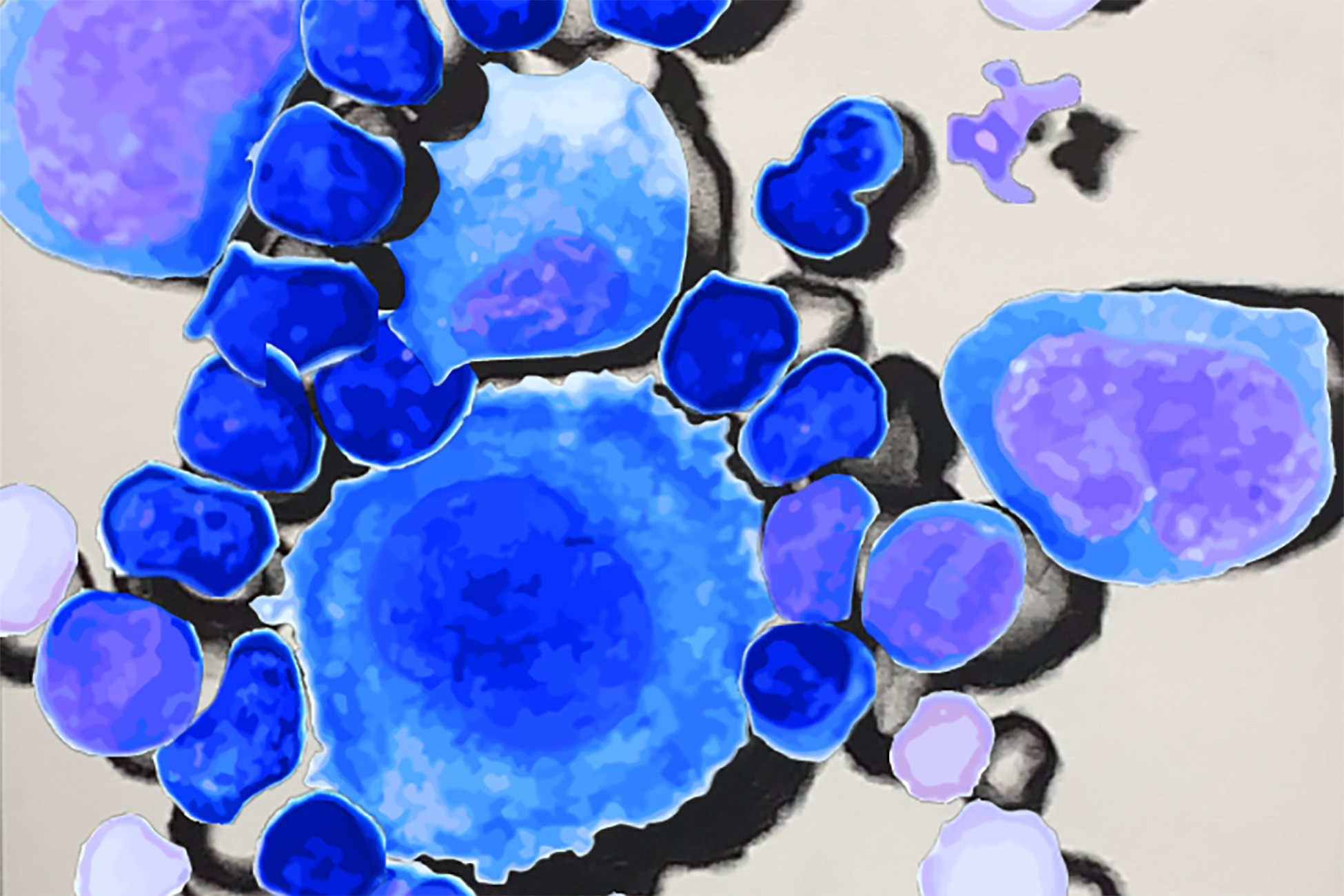
September 20, 2021
Contact: Kenny Gerling, gerlingk@missouri.edu
Last summer, Katina Bitsicas, an artist and assistant professor of digital storytelling in the School of Visual Studies at the University of Missouri, lost her father to mantle cell lymphoma. It was a death, Bitsicas explained, that didn’t have to happen.
“A month after he died, the FDA approved the treatment that would have saved him,” Bitsicas said while standing behind the almost-completed Roy Blunt NextGen Precision Health building in August 2021.
NextGen is MU’s No. 1 research priority, and its researchers are dedicated to finding solutions to society’s toughest diseases, including cancer.
Bitsicas looked toward the building again. From the loading dock, trucks beeped with the steady rhythm of heart monitors. “Facilities like NextGen only speed up those types of life saving discoveries.”
Visualizing cancer through art
When the building opens on Oct. 19, visitors will be greeted by a series of vibrant works informed by Bitsicas’ career-long interest in what she calls “the abject” (finding the beauty in grief, loss, bereavement). It’s a project that also weaves her own family history together with scientific research, creating an apt memorial to her father.
If that sounds heavy, the final product will surprise you. It’s a joyful churn of color that matches the grand ambitions of NextGen. “A lot of my work has to do with creating something beautiful out of something that maybe doesn’t appear that way on the surface,” Bitsicas said.
Her work also marks the first of many NextGen-inspired collaborations between artists, researchers and scientists. The hope is that NextGen will serve as a hub of inspiration, a place with the interdisciplinary connections and creativity needed to save lives.
Beauty and breakthrough science
To create pieces for the building, Bitsicas used archival scientific footage and an old overhead projector to design images that could be printed as large adhesive clings. The colorful patterns are fashioned from two sources: the swirl of a liquid light show (similar to those Bitsicas remembers creating with her father as a child) and magnified cross-sections of mantle cell lymphoma — the disease that eventually took him.

“It’s a way to display something that’s beautiful and brings joy to people — from these bright vibrant colors,” Bitsicas said about her work. “But it also approaches the more serious topic of what our bodies can do to us.”
Ahead of NextGen’s October opening, Bitsicas’ creation will be installed on illuminated walls in the main entryway, as well as wrapped around the glass-encased Visualization Center, a central meeting space.
“I’m hoping my work can help researchers think in new and exciting ways to move their projects forward while working in the building,” Bitsicas said. “Not that my art will change how they think, but maybe it will encourage them to consider all possibilities for the problems they are trying to solve.”
Designed for interdisciplinarity
“I believe that inspiration is a key ingredient to advancing biomedical research and precision health.” said Richard J. Barohn, MD, executive director of NextGen and executive vice chancellor for health affairs at MU. “And inspiration, creativity and seeing our most vexing health issues from every vantage point to create solutions happens when people from different academic backgrounds and life experiences come together to work on solutions. That is why we reached out to the School of Visual Studies to explore how artists could work hand in hand with NextGen researchers.”
Those conversations involved several faculty members, including Lee Ann Garrison, director of the School of Visual Studies. “We’re not just talking about going in and hanging paintings on walls,” Garrison said. “We’re looking at getting people together — both creative and scientific minds — to solve problems from multiple points of view and multiple ways of solving problems.”
When it came time to create original artwork for the building, Bitsicas was an obvious choice. As an extension of her artistic practice, she also collaborates with Abigail Rolbiecki, PhD, a researcher in the MU School of Medicine, on digital storytelling workshops for those who are recently bereaved.
“I’m an artist, but I’m on the other side of things, too,” Bitsicas said. “I’m researching how you can use art and storytelling as a method for scientific progress with measurable outcomes.”
Creative collaborations
Plans to further incorporate the arts into the NextGen initiative are well underway. Garrison noted one possibility is for student designers to work with researchers to create powerful data visualizations.
“We live in a visual culture, and it’s important to train students to be excellent at interdisciplinary connections,” Garrison said.
Bitsicas agreed and said that art can move both society and science forward. In addition to those big ideas, the project is also a personal testament to the determination of families who will benefit from NextGen’s lifesaving treatments. “I’m honored to make something permanent out of the cancer cells that caused my father’s impermanence,” Bitsicas said. “It becomes a way of making something that will outlive him.”



